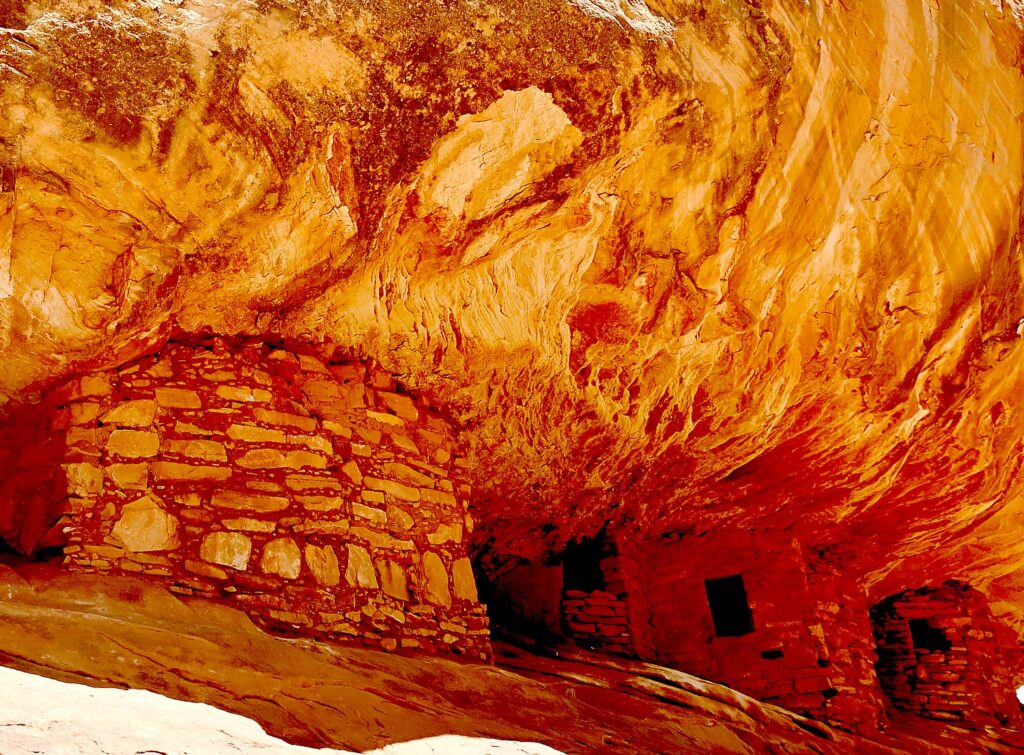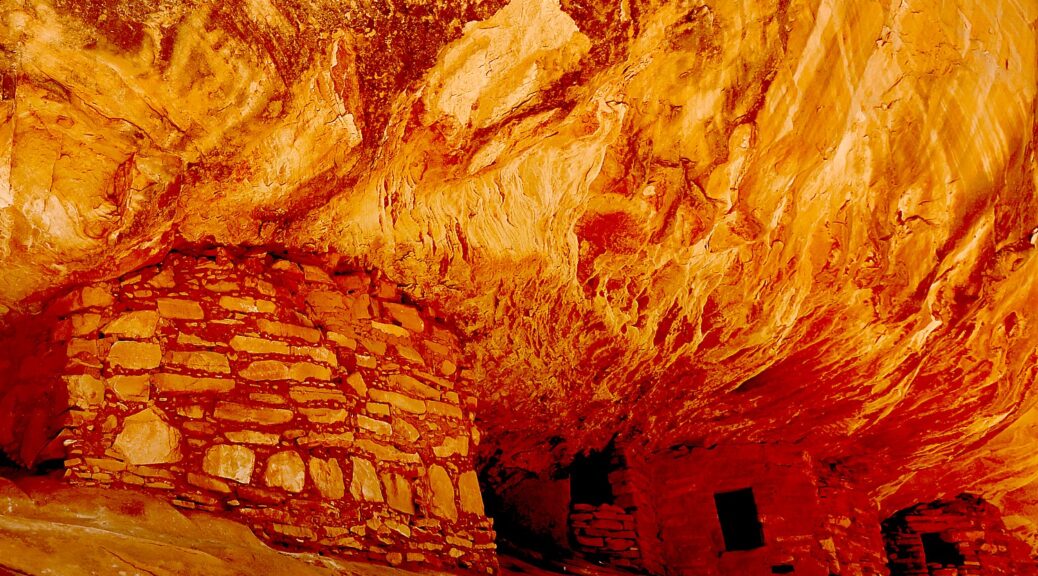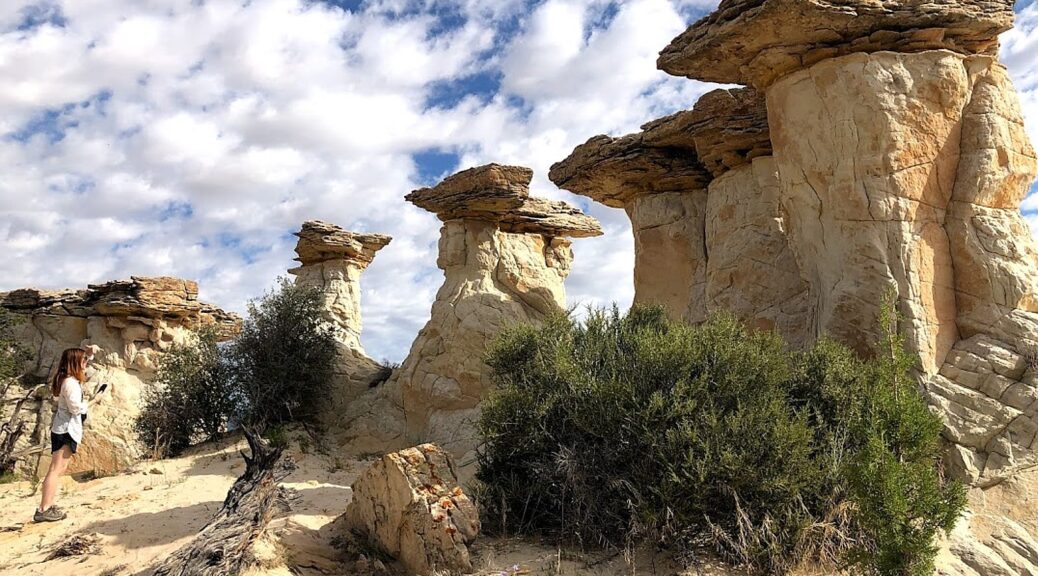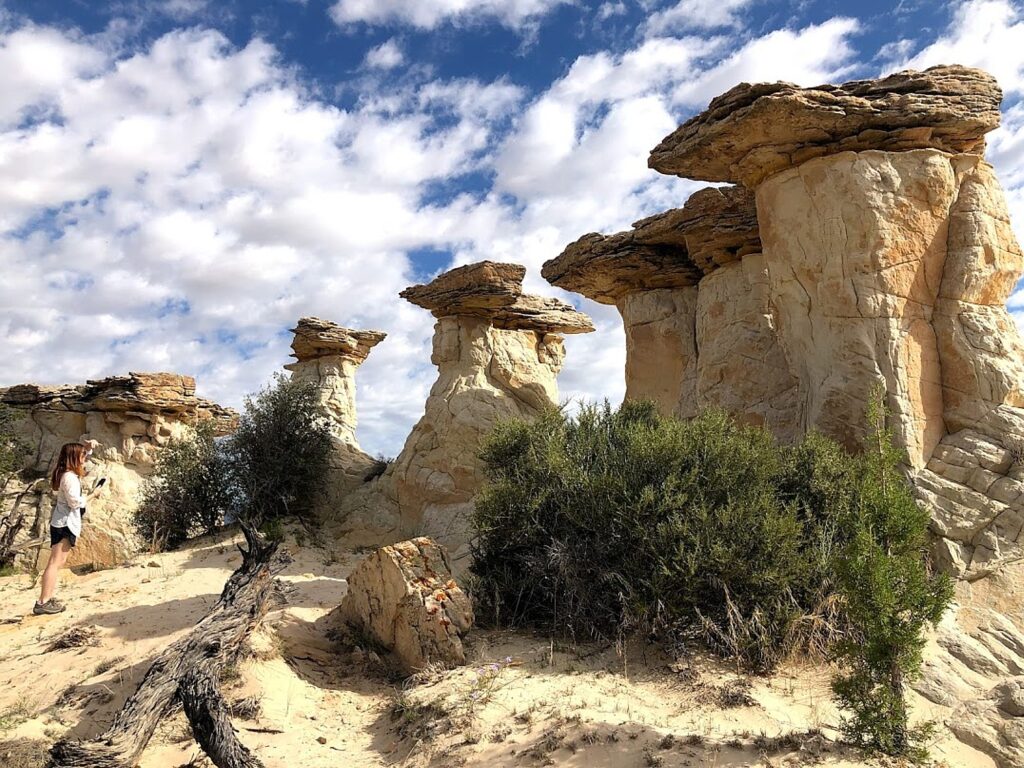President Establishes New National Monuments in Nevada and Texas; Directs Secretary of Commerce to Consider Expanding Protections for Pacific Remote Islands Which Would Reach Goal of Conserving 30% of U.S. Ocean by 2030

At the White House Conservation in Action Summit on March 21, President Biden announced major new actions to conserve and restore lands and waters across the nation, including by establishing Avi Kwa Ame National Monument in Nevada and Castner Range National Monument in Texas. The President also directed the Secretary of Commerce to consider exercising her authority to protect all U.S. waters around the Pacific Remote Islands. These new commitments build on President Biden’s historic climate and environmental record, including delivering on the most ambitious land and water conservation agenda in American history.
The announcements include:
- Establishing two new national monuments: Avi Kwa Ame National Monument in Nevada and Castner Range National Monument in Texas. The designation of these two national monuments demonstrates the Biden-Harris Administration’s commitment to protect historically and culturally significant areas and conserve our nation’s treasured outdoor spaces. Avi Kwa Ame National Monument in Nevada will honor Tribal Nations and Indigenous peoples while conserving our public lands and growing America’s outdoor recreation economy. In Texas, Castner Range National Monument will expand access to the outdoors for the El Paso community while honoring our nation’s veterans and servicemembers. Together, these new national monuments protect nearly 514,000 acres of public lands.
- Protecting all U.S. waters around the Pacific Remote Islands. The President directed the Secretary of Commerce to consider initiating a new National Marine Sanctuary designation within the next 30 days to protect all U.S. waters around the Pacific Remote Islands. If completed, the new sanctuary would ensure the U.S. will reach the President’s goal of conserving at least 30% of ocean waters under American jurisdiction by 2030.
- New actions to conserve, restore, and expand access to lands and waters. The Biden-Harris Administration is announcing a series of new steps to conserve, restore, and expand access to lands and waters across the country. These include a proposal to modernize the management of America’s public lands, a plan to harness the power of the ocean to fight the climate crisis, a strategy to better conserve wildlife corridors, and new funding to improve access to outdoor recreation, promote Tribal conservation, reduce wildfire risk, and more.
These actions build on more than two years of the Biden-Harris Administration’s progress and historic investments to advance conservation, restoration, and stewardship nationwide:
- During his first year in office, President Biden protected more lands and waters than any president since John F. Kennedy, including by restoring protections for Bears Ears, Grand Staircase-Escalante, and Northeast Canyons and Seamounts National Monuments. Last year, President Biden designated his first new national monument, Camp Hale – Continental Divide in Colorado.
- Thanks to the President’s Bipartisan Infrastructure Law and the Inflation Reduction Act, President Biden has, over his first two years in office, invested over $10 billion in conservation initiatives – more than any other modern president.
- Under the President’s leadership, the Administration is making unprecedented investments in land, water, and wildlife conservation, including by launching the $1 billion America the Beautiful Challenge. These investments will help meet the President’s goal – set during his first week in office – of conserving at least 30% of U.S. lands and waters by 2030.
- The Biden-Harris Administration has protected nationally-significant lands and waters across the country, including recent actions to restore protections for roadless areas of the Tongass National Forest, prevent future oil and gas leasing in the entire U.S. Arctic Ocean, safeguard Bristol Bay in Alaska and the world-class salmon fishery it supports, and protect America’s most-visited wilderness area, the Boundary Waters in Minnesota. The Administration is also working to protect Chaco Canyon in New Mexico, the Thompson Divide in Colorado, and accelerating restoration efforts in the Great Lakes, the Chesapeake Bay, the Everglades, and the Columbia River Basin.
Establishing Avi Kwa Ame National Monument in Nevada
President Biden signed a proclamation establishing the Avi Kwa Ame National Monument. This designation will honor Tribal Nations and Indigenous peoples by protecting this sacred Nevada landscape and its historically and scientifically important features, while conserving our public lands and growing America’s outdoor recreation economy.
Avi Kwa Ame is considered to be among the most sacred places on Earth by the Mojave, Chemehuevi, and some Southern Paiute people. It is also important to other Tribal Nations and Indigenous Peoples including the Cocopah, Halchidhoma, Havasupai, Hopi, Hualapai, Kumeyaay, Maricopa, Pai Pai, Quechan, Yavapai, and Zuni Tribes. Its scenic peaks include Avi Kwa Ame (Spirit Mountain), which is designated as a Traditional Cultural Property on the National Register of Historic Places in recognition of its religious and cultural importance. The area is also home to the one of the world’s largest Joshua tree forests, and provides continuous habitat or migration corridors for species such as the desert bighorn sheep, desert tortoise, and Gila monster.
Establishing Castner Range National Monument in Texas
President Biden also signed a proclamation establishing the Castner Range National Monument, in El Paso, Texas. This action will protect the cultural, scientific, and historic objects found within the monument’s boundaries, honor our veterans, servicemembers, and Tribal Nations, and expand access to outdoor recreation on our public lands.
Located on Fort Bliss, Castner Range served as a training and testing site for the U.S. Army during World War II, the Korean War, and the Vietnam War. The Army ceased training at the site and closed Castner Range in 1966. Once the area is sufficiently remediated to be safe for public access, Castner Range will offer unique opportunities for the El Paso community to experience, explore, and learn from nature. President Biden is committed to expanding access to nature for underserved communities that have historically had less access to our public lands, like those bordering Castner Range. Protecting Castner Range connects the area with the Franklin Mountains State Park, creating continuous habitat for wildlife and improved public access for outdoor recreation. Castner Range also hosts significant cultural sites documenting the history of Tribal Nations, including the Apache and Pueblo peoples and the Comanche Nation, Hopi Tribe, and Kiowa Indian Tribe of Oklahoma.
Directing Consideration of a Sanctuary to Complete Protections for Waters Around the Pacific Remote Islands
Consistent with the Biden-Harris Administration’s commitment to conserving 30% of lands and waters by 2030, the President signed a Presidential Memorandum directing the Secretary of Commerce to, using the National Marine Sanctuaries Act, consider initiating a sanctuary designation within the next 30 days to expand protections around the Pacific Remote Islands southwest of Hawaii. Such protections would encompass areas unaddressed by previous administrations so all areas of U.S. jurisdiction around the islands, atolls, and reef of the Pacific Remote Islands will be protected.
The potential new National Marine Sanctuary identified in the Memorandum would conserve 777,000 square miles, including the existing Pacific Remote Islands Marine National Monument and currently unprotected submerged lands and waters. The region has a rich ancestral tie to many Native Hawaiian and Pacific Island communities. The process for a potential sanctuary designation would allow the National Oceanic and Atmospheric Administration (NOAA) to further explore the area’s scientific, cultural, and ancestral linkages, and tailor its management accordingly.
The President is also directing the Secretary of the Interior and the Secretary of Commerce to conduct a public process to work with regional Indigenous cultural leaders to appropriately rename the existing Pacific Remote Islands National Monument, and potentially the Islands themselves, to honor the area’s heritage, ancestral pathways, and stopping points for Pacific Island voyagers, and to provide posthumous recognition for young Native Hawaiian men sent to secure U.S. territorial claim to the islands in the run up to World War II.
New Federal and Other Actions to Conserve, Restore, and Expand Access to Lands and Waters
Ocean Climate Action Plan: The Ocean Policy Committee, co-chaired by the White House Council on Environmental Quality and the White House Office of Science and Technology Policy, is releasing the first-ever United States Ocean Climate Action Plan, a groundbreaking roadmap to harnesses the power of the ocean to advance immediate, transformational steps to protect ocean health and address the climate crisis. Acknowledging that there is no path to a healthy and livable climate without the ocean, the plan outlines new actions on the Administration’s ocean-climate priorities, including efforts to advance climate solutions, promote environmental justice, support healthy communities, and ensure a robust and sustainable ocean economy.
Wildlife Corridors Guidance: The White House Council on Environmental Quality is issuing new guidance to Federal agencies on how to better incorporate ecological connectivity and wildlife corridors into federal planning and decision-making. The guidance highlights the importance of connectivity across terrestrial, marine, and freshwater habitats, encouraging collaboration across management and ownership boundaries with states, Tribes, local governments, and private land owners. This helps deliver on one of the America the Beautiful Initiative’s six early focus areas – supporting collaborative conservation of fish and wildlife habitat and corridors.
Strengthening the Stewardship of America’s Public Lands: The Department of the Interior’s Bureau of Land Management in the coming weeks is seeking public input on a proposed rule that will help update and modernize the agency’s tools and strategies for managing America’s public lands. With climate change imposing mounting impacts on the nation’s public lands, and the growing importance of public lands for recreation and conservation, the proposed rule would help ensure that the nation’s lands continue to provide abundant and well-connected wildlife habitat, supply clean drinking water, and power local economies.
New Partnership to Protect Military Readiness and Preserve Green Space: The Department of the Interior and the Department of Defense are partnering to allocate $80 million through a combination of the Land and Water Conservation Fund (LWCF) and matching funds from DoD’s Readiness and Environmental Protection Integration Program (REPI) to preserve green space around military installations and improve access to outdoor recreation for millions of Americans. The Departments will make the funding available to states through a competitive process that could support projects on Tribal, private, state, or local lands.
$100 Million Tribal Conservation Funding Pledge: Today, Native Americans in Philanthropy, in collaboration with Biodiversity Funders Group and 15 philanthropies, is launching the Tribal Nations Conservation Pledge with an initial commitment of more than $100 million. This is a new platform for philanthropic organizations to support the conservation work of Tribal Nations and public-private partnerships between the Biden-Harris Administration, Tribes, and philanthropy. The pledge calls on funders to commit to a self-determined amount of funding, or a self-determined percentage of annual programmatic funding, to support the biodiversity and conservation efforts of Tribes, inter-Tribal organizations, and Tribal consortia.
America the Beautiful 2022 Annual Report: The Biden-Harris Administration is releasing the 2022 America the Beautiful Annual Report, an update on progress made to support locally-led conservation and restoration efforts and meet the President’s goal to conserve at least 30% of U.S. lands and waters by 2030.
New Partnership to Accelerate the Conservation of At-Risk Species: The Department of the Interior’s U.S. Fish and Wildlife Service, National Alliance of Forest Owners and the National Council for Air and Stream Improvement Inc., will announce a memorandum of understanding which formalizes the Wildlife Conservation Initiative, a collaborative partnership focused on advancing the conservation of at-risk and listed species within private working forests nationwide. The announcement comes as the Department of the Interior celebrates the 50th anniversary of the Endangered Species Act and highlights the landmark law’s importance in preventing imperiled species’ extinction, promoting the recovery of wildlife, and conserving the habitats upon which they depend.
Wildlife Crossing Pilot Program: Soon the Federal Highway Administration and the Department of Transportation will open applications for the first-of-its-kind $350 million Wildlife Crossings Pilot Program. The program will build infrastructure that is proven to improve roadway safety – particularly in rural communities – and bring down the roughly 200 deaths stemming from more than one million collisions every year between vehicles and wildlife.
Nearly $200 Million to Reduce Wildfire Risk to Communities: The U.S. Department of Agriculture’s Forest Service announced nearly $200 million in Community Wildfire Defense Grant (CWDG) program grants to communities across the country. Funded by President Biden’s Bipartisan Infrastructure Law, the CWDG program is designed to assist communities, including Tribal communities, non-profit organizations, state forestry agencies and Alaska Native corporations with planning for and mitigating wildfire risks to communities and critical infrastructure as the nation faces an ongoing wildfire crisis.
State Wildlife Grants: The U.S. Fish and Wildlife Service is distributing over $56 million for state fish and wildlife agencies through the State Wildlife Grant Program to support conservation and stewardship efforts for imperiled wildlife and their habitats.
Boating Infrastructure Grants: The U.S. Fish and Wildlife Service is distributing over $20 million in grant funding to assist states and territories in the construction, renovation and maintenance of marinas and other boating facilities for outdoor recreation. Grants will support projects in 20 states, Puerto Rico and the U.S. Virgin Islands to increase outdoor recreation access and waterway stewardship.
Pactola Reservoir Protection: The U.S. Forest Service and the Bureau of Land Management announced actions to consider protections for cultural and natural resources in the Pactola Reservoir – Rapid Creek Watershed in South Dakota, including drinking water for Rapid City and Ellsworth Air Force Base, from the adverse impacts of mineral exploration and development. The Pactola Reservoir is the largest and deepest reservoir in the Black Hills National Forest, with 14 miles of shoreline and 150-foot depths on 800 acres and provides high quality recreation for communities and visitors



